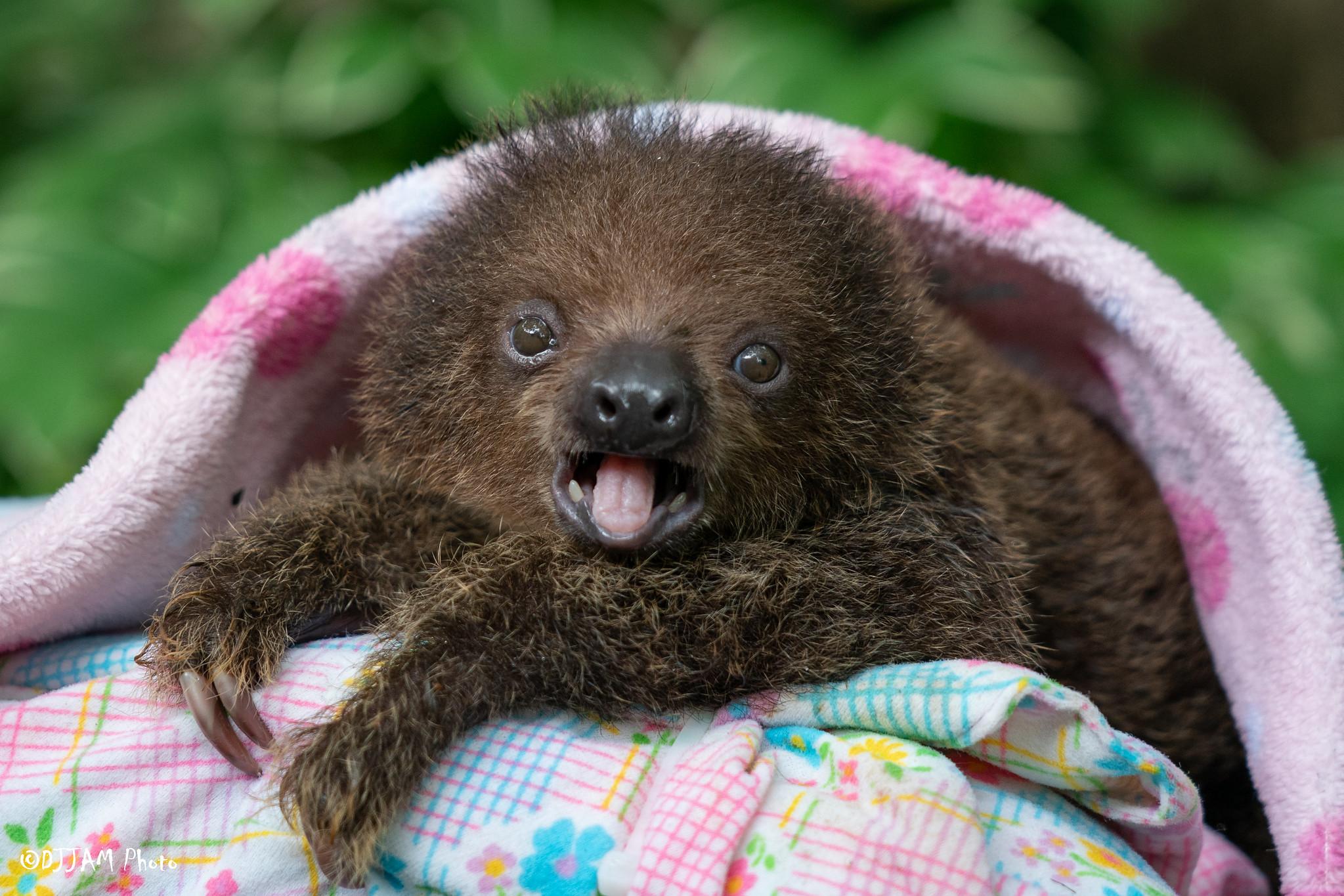
Baby Sloths: The Adorable and Enigmatic Creatures of the Rainforest
In the heart of the lush rainforests of Central and South America, there exists a captivating species that has captured the hearts of nature enthusiasts worldwide: the sloth. These slow-moving, tree-dwelling mammals are renowned for their distinctive appearance, gentle nature, and the endearing charm of their young. Baby sloths, in particular, are a sight to behold, embodying the epitome of cuteness and vulnerability.
Birth and Early Development
Baby sloths, known as cubs, are born after a gestation period of approximately six months. They are typically born as single offspring, although twins are not uncommon. Upon birth, cubs weigh a mere 10-12 ounces and are approximately 10 inches in length. Their fur is a pale gray or cream color, which provides excellent camouflage amidst the dappled light of the rainforest canopy.
For the first few weeks of life, cubs cling tightly to their mothers’ bellies, nursing frequently. Sloth mothers are incredibly attentive and protective, grooming their young and keeping them warm with their thick fur. As cubs grow stronger, they begin to explore their surroundings, venturing out from their mothers’ embrace to investigate the branches and leaves of their arboreal home.
Physical Characteristics
Baby sloths are instantly recognizable by their large, round eyes, which give them an endearingly innocent expression. Their faces are framed by a distinctive black mask, which extends from their eyes to their noses. This mask is believed to help camouflage the cubs’ faces from predators.
Their bodies are covered in a thick, shaggy coat of fur that serves as excellent insulation against the elements. The fur is also home to a variety of algae and fungi, which provide the sloths with additional camouflage and nutrients.
Baby sloths have long, slender limbs with sharp claws that allow them to grip branches securely. Their tails are prehensile, meaning they can use them to grasp objects and assist in climbing.
Behavior and Development
Baby sloths are incredibly slow-moving creatures, spending most of their time hanging upside down from branches. They move at a leisurely pace, conserving energy and avoiding detection by predators.
As they grow older, cubs become more active and playful. They engage in gentle wrestling matches with their siblings and practice climbing and hanging from branches. These activities help them develop the skills they need to survive in the rainforest.
Baby sloths are also highly vocal creatures, communicating with their mothers and other sloths through a variety of sounds. They emit high-pitched whistles, grunts, and squeals to express hunger, contentment, or distress.
Diet and Nutrition
Baby sloths are primarily herbivores, feeding on a diet of leaves, buds, and fruits. They have a specialized digestive system that allows them to efficiently extract nutrients from the tough plant material they consume.
Cubs nurse from their mothers for the first few months of life, supplementing their diet with leaves and other vegetation as they grow older. Sloths are known for their slow metabolism, which means they can go for long periods without eating.
Threats and Conservation
Baby sloths face a number of threats in the wild, including habitat loss, deforestation, and predation. Habitat loss is a major concern, as rainforests are being cleared for agriculture, logging, and other human activities. This loss of habitat reduces the availability of food and shelter for sloths, making it difficult for them to survive.
Deforestation also fragments sloth populations, isolating them from one another and reducing their genetic diversity. This can lead to inbreeding and an increased susceptibility to disease.
Predation is another threat to baby sloths. Jaguars, harpy eagles, and other predators prey on young sloths, particularly those that are separated from their mothers.
Conservation efforts are underway to protect sloths and their habitats. These efforts include establishing protected areas, reforestation projects, and educational programs to raise awareness about the importance of these fascinating creatures.
Conclusion
Baby sloths are truly remarkable creatures, embodying the beauty and fragility of the rainforest ecosystem. Their adorable appearance, gentle nature, and endearing vulnerability have captivated the hearts of people around the world. By understanding the threats they face and supporting conservation efforts, we can help ensure that these enchanting animals continue to thrive in the rainforests for generations to come.
